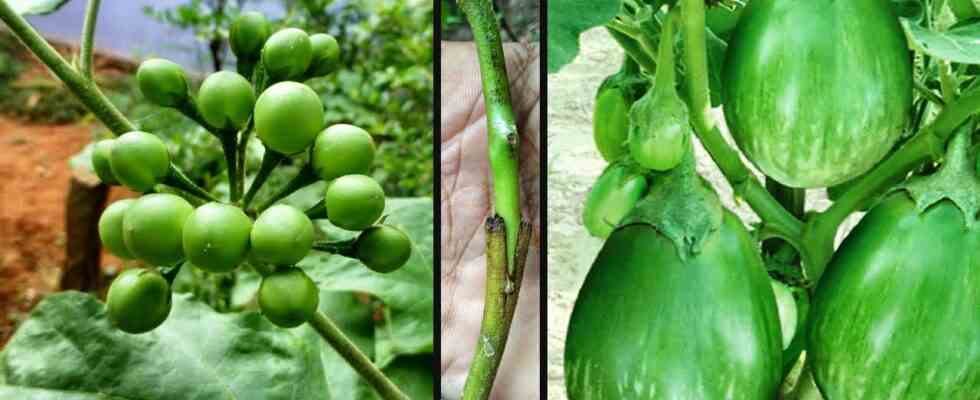What is a transplant?
The grafted plants are the result of a technique used by market gardeners and which consists of associatein the same plant, the genetic advantages of two species or different plant varieties. One of the plants is located at the bottom and has the root system, it is the rootstock. The other plant occupies the upper part and includes the stems, the fruits and will bear the flowers and the fruits, it is the graft. The two plants are grafted together by an incision carried out just above the collar which is the part of the plant located between the roots and the stem.
These grafts, although making it possible to combine the genes of two different plants, are not genetic manipulations and their results are not considered genetically modified organisms (GMOs), but rather the fruits of a kind of hybridization and the seeds produced by the vegetable have only the genetic heritage of the scion.
The grafting of vegetables remains more delicate than that of fruit trees and remains, until now, a specialty reserved for certain professionals who have the necessary knowledge to succeed in the delicate choice of the two varieties to be grafted. This complexity explains the higher cost of grafted vegetables.
Which vegetables can be grafted?
Vegetables that can be grafted are especially fruit vegetables and those with longer life cycles between sowing and harvesting. It is therefore mainly different varieties of tomatoes, eggplants, peppers, peppers, cucumbers, artichokes, zucchini, melons and watermelons.
How are transplants performed?
It all starts with the selection of the two plants to be grafted. These may be of two different varieties of the same species or even of two different species, such as graft a tomato stalk onto an eggplant stalk. The choice of species must be made according to the qualities sought. To obtain seedlings, it is possible to sow seeds at the very beginning of the season or to buy seedlings already ready to be grafted.

The market gardener begins with take a sucker from the foot of the first plant, the tomato for example, and cut the second plant, here of aubergine, two or three centimeters high. He delicately splits the eggplant plant which is the rootstock and prunes the tomato scion bevel and insert it into the slot. He fix the two plants with raffiapliers or any other means and place everything under cover, usually indoors, for a week.
The grafted seedlings are planted when the planting season arrives, usually between mid-March to the end of April.
Benefits of grafted vegetables
The first objective and advantage of grafting two different plants is to associate, in the same plant, the desired genetic qualities of the rootstock and the scion. Thus, the rootstock is generally chosen for its vigour, its resistance to disease, drought, frost or even insects and parasites harmful to plants. The graft is, for its part, chosen for its taste qualities, its productivity, its earliness to produce vegetables in the season, its production more spread out over the season, or its speed of growth.
The transplant therefore makes it possible to have stronger vegetable plants, more resistantvegetables tastier and an more abundant production.
Another advantage of the graft, the fruiting of vegetables starts lower on the main stem, which allows a better yield.
Their disadvantages
Grafted vegetables do not only have advantages. Some blame them especially their much higher price than those of other plants. Grafted vegetable seedlings are, in fact, sold at around 5 euros per foot, while conventional seedlings are sold from 0.5 to 1.5 euro per foot.
It should also be noted that the grafted plants are not suitable for all gardens. They grow more vigorously and faster than ungrafted plants, which can be a hassle for small gardens. Some propose as a solution to this problem to plant the seedlings more densely to limit their growth, which returns, once again, to the problem of the high cost of grafted seedlings.
As for the taste quality which is supposed to be better for vegetables from grafted plants, it is not always there and some even prefer the flavors of non-grafted vegetables.

